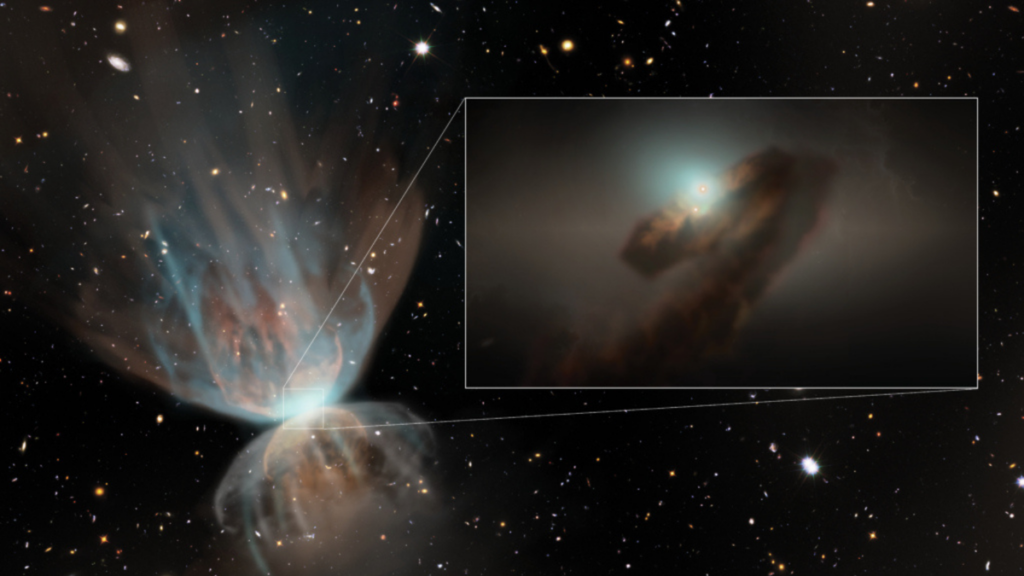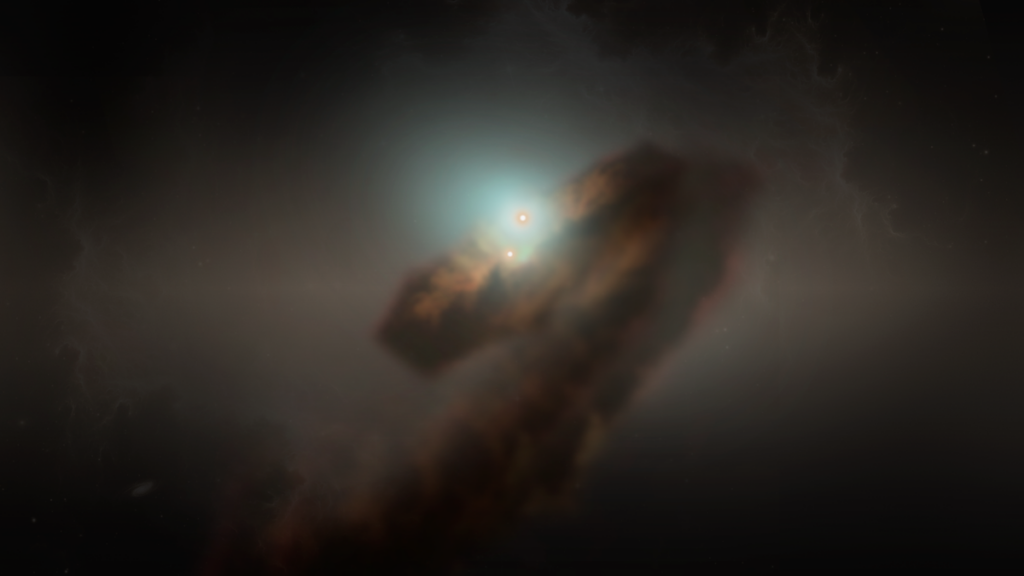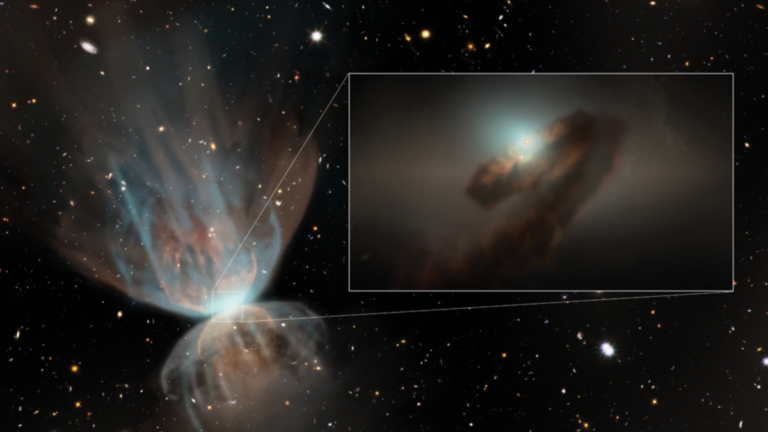Astronomers are making progress in unraveling the enigma of the erupting Orion star system.
FU Ori has been eating up material for almost a hundred years to keep the eruption going. At last, we were able to key a formula on how these stars that always act like a teenager replenish the mass.
Astronomers discovered the source of the mystery of how the double star produced an outburst over a hundred years and it seems the solution had been found.
The double star system FU Orionis (FU Ori), which is located at about 1,500 light-years from Earth in the constellation of Orion, was first observed by astronomers in 1936 when it suddenly became 1,000 times brighter. Such a dramatic increase in brightness was anticipated for ancient red stars that had gone supernova, but the stars of FU Ori are very young – only around 2 million years old, a mere toddler in astronomical terms and, also, compared to our middle-aged planet that has ages, a few billions of years. A 6 billion – old sun lit up our way.
Recently, a team of scientists has employed the Atacama Large Millimeter/submillimeter Array (ALMA), a set of 66 radio telescopes located in Northern Chile, to find out why and how this happens.

The detection of FU Ori’s outburst resulted in the formation of a new star classification, FUors, which became bright suddenly and then faded over many years. Scientists have found this explosive brightening is the result of FUors stealing energy from their surroundings via the same process that helps stars and planets form: The gathering and accumulation of scattered matter.
“(direct quote): “FU Ori has been swallowing matter continuously almost for 100 years, to stay at this stage of its eruption. We’ve finally been able to answer the question of how the young outbursting stars replenish their mass. ” Antonio Hales, team leader and scientist of the National Radio Astronomy Observatory (NRAO), said in a (video/press release) statement. “”The first time we have the actual evidence of the material that feeds the eruptions.
It is riveting that ALMA finally yields the answers to that mystery that we have been together studying since 2012.
The team’s landmark discovery is a thread material that is a good mixture of carbon monoxide and that is falling from FU Ori. Although this thin stream of gas is now the one feeding the stars, it is not enough to explain the 100 years of eruptions and brightness that this system has displayed.
Accordingly, the team assume today’s observation with ALMA to be the debris of the huge mass of matter went around this star system earlier.
“Maybe the existence of a rising stream of gas in the past was the reason that everything in the system became too disturbed and the its brightness was increased,” suggested Hales.

The team observed FU Ori with several different arrangements of the 66 radio antennas in the Atacama Desert that make up ALMA, to see the different emissions from this star system and to detect mass flowing into it. The neat part of these is that they also did numerical modeling to reproduce the flow of gas to such baby stars.
“We measured the same structure shape and velocities as for those of an accretion disk of forming a new star, and the numbers were consistent with what was expected,” said team member Aashish Gupta, one of the coauthors. F. candidate at European Southern Observatory (ESO) who came up with the idea of a stream of matter that is feeding FU Ori.
Not only did the scientists watch a strand of stuff go into FU Ori, but they also noticed a stream of carbon monoxide exiting the bright star. This gas isn´t evident to have originated from a previous outburst of the system.
The outflow seems to resemble other outflows that have been associated with protostars, which are young stars that have not yet gathered enough mass from their surroundings to trigger the nuclear fusion of hydrogen to helium in their cores, making them main sequence stars.
“Thus, it makes sense that these warm unusual (FUor) stars are made with similar ways we do know how different stars and planets are made. And we think that all stars undergo violent eruptions confirms our understanding about how star formation happens,” concluded Hales. “These outbursts are consequential because they change the chemical composition of the disc which will later be the home of the infant star and the planet forming from it. “
The team’s research is published on Monday (April 29) in the Astrophysical Journal.
Do not forget to share your opinion with us to provide you with the best posts !




0 Comments